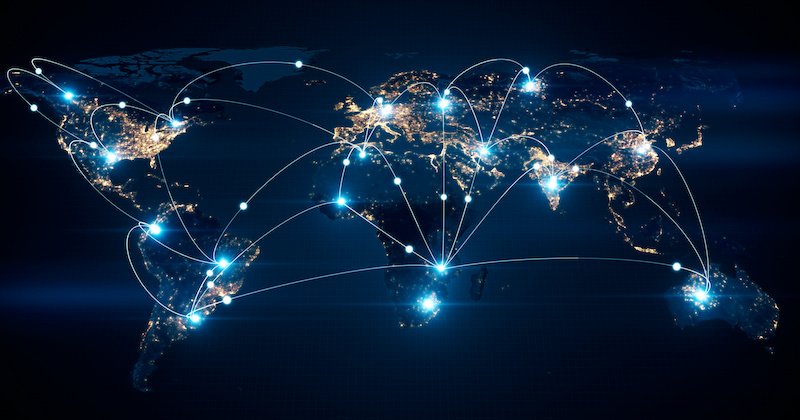As the global economy adjusts to persistent economic and geopolitical pressures and disruptions, the familiar routes that defined the world trade map are being redrawn and regional trade lanes are playing a greater role in world trade, according to a new analysis by Boston Consulting Group (BCG).
“This is a not a blip. These changes in trade patterns are reshaping the global economy. Companies need to be thoughtful and decisive, or risk being caught out by fast-moving factors outside of their control.”
— Michael McAdoo, BCG
The changing trade picture shows that overall global trade is growing at a slower rate than the world economy, a fundamental shift away from the trend of trade-led globalism that the world enjoyed in most of the years since the end of the Cold War. World trade in goods is forecast to grow at 2.8% per year, on average, through 2032, compared with an estimated 3.1% growth rate for global GDP in the same period, according to the report.
The emergence and growing prominence of regional trade corridors is having a dampening effect on traditionally deep and fast-growing trade lanes such as China-U.S. and China-EU.

“Global trade is shifting and the once-familiar map is being redrawn,” said Nikolaus Lang, managing director and senior partner, global leader of BCG’s Global Advantage practice, and a coauthor of the report. “As supply chains are rebalanced and neighboring countries solidify their regional trade relationships, we expect to see lasting changes in flows of goods around the world.”
5 Emerging Global Trade Dynamics
BCG’s research highlights five emerging global trade dynamics that will characterize the world in the coming decade:
- China Trade Dynamics. Persistent trade tensions and increasing “managed trade” between China and the West are causing West-China trade to decelerate. The projected fall-off in US-China trade is one of the most significant developments in the updated global trade map, with 2032 trade value forecast to fall by $197 billion from its 2022 level. China’s trade with the EU will continue to grow, but more slowly than the global average.
- Stronghold North America. The United States, Canada, and Mexico will benefit from the U.S. Mexico Canada Agreement (USMCA), as US trade with its neighbors is forecast to grow by $466 billion in the coming decade.
- ASEAN Trade Growth. Southeast Asian nations are among the biggest winners in the new world trade order, with cumulative ASEAN trade forecast to grow $1.2 trillion in the next ten years due to its emergence as a key destination for companies seeking to decrease their dependence on China for manufacturing and sourcing, which is driving ASEAN’s growth as a platform for global exports. Strong fundamentals in the ASEAN region itself are also driving increased investment and trade activity.
- India Ignition. India is benefiting from a low cost structure, increasingly capable workforce, and improving logistics to rise as a major domestic market and “China + 1” destination for global manufacturing. India is forecast to achieve 6.3% average annual trade growth, more than twice the global average.
- Russian Trade Divergence. Much of Russia’s trade has been shifting toward fellow BRICs countries (Brazil, China, India, and South Africa). While Russia’s trade with China and India will grow by $134 billion and $26 billion respectively by 2032, its trade with the EU will fall by $222 billion.
“Unit economics is one of the leading contributors to these shifts, but geopolitics are also a clear catalyst,” said Marc Gilbert, a managing director and senior partner at BCG and a coauthor of the report. “In a year with many crucial global elections ahead and nearly half of the world’s population voting, we expect to see a continued industrial policy focus on national economic security, job creation, and green energy. One consequence will be the reinforcing of regional trade groupings, especially in North America, the European Union, and ASEAN.”
The Last Word: The Reshoring Movement Is In Full Stride
Manufacturers should consider five factors if moving from a China or other offshore location, advises Rosemary Coates, Executive Director of the Reshoring Institute. Read more…
China is today the world’s leading exporter of manufactured goods, but is slipping in relative cost-competitiveness and has a slowing domestic economy. As non-Chinese firms re-evaluate their supply chain as a consequence, trade that stops flowing between China and the West will often move elsewhere. Notable beneficiaries of reduced concentration in China will be the ASEAN countries and India as many companies move manufacturing to these economies, both to reduce global supply chain risks and to access new markets. As a result, trade between ASEAN and China will grow an impressive $616 billion in the coming decade, and trade between ASEAN and both the US and Japan will also increase, by more than $200 billion.
“This is a not a blip. These changes in trade patterns are reshaping the global economy. Companies need to be thoughtful and decisive, or risk being caught out by fast-moving factors outside of their control,” said Michael McAdoo, BCG partner and director for global trade and investment and a coauthor of the report. “Those who are ahead of the curve are already investing to strengthen supply chain resilience, responding to volatility, and building up the right risk and cybersecurity capabilities.”




